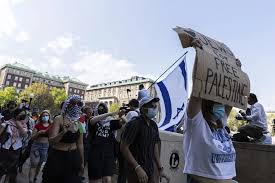
Columbia University has been a site of significant activism and protest throughout its history. In recent years, student movements have arisen, addressing a variety of issues ranging from social justice and equity to climate change and campus safety. This article explores the key demands of Columbia University protesters, the context behind these demands, and the university’s response.
Historical Context of Protests at Columbia University
Columbia University, founded in 1754, has a rich history of student activism. Major protests have included the 1968 student strikes against the Vietnam War and for civil rights, reflecting the broader societal movements of their times. The current wave of protests continues this legacy, as students strive to address pressing contemporary issues that impact their education and community.Key Issues Driving Protests.
Racial Justice and Equity
A prominent demand among protesters at Columbia University is the call for racial justice and equity. In the wake of the Black Lives Matter movement and the ongoing discussions surrounding systemic racism, students have pushed for changes that promote diversity and inclusion on campus.
Specific demands include: Increased funding for minority student organizations: Advocates seek more resources for groups that represent underrepresented communities.
Curriculum changes: Calls for the incorporation of more diverse perspectives in course offerings, especially regarding race, gender, and class. Support for Black students and faculty: Protests have highlighted the need for more recruitment and retention efforts for Black faculty and staff.
Climate Justice
With the global climate crisis escalating, Columbia students have been vocal about the university’s environmental policies.
Their demands include: Divestment from fossil fuels: Protesters are urging Columbia to withdraw its investments in fossil fuel companies and to reinvest in sustainable initiatives.
Increased transparency: Activists are calling for more openness regarding the university’s environmental practices and sustainability efforts.
Commitment to carbon neutrality: Students demand that Columbia set clear goals for reducing its carbon footprint and take actionable steps toward achieving these targets.
Mental Health Resources
Mental health has emerged as a significant concern among students, prompting calls for enhanced support services.
Key demands include:Increased funding for mental health services: Protesters argue that the university must allocate more resources to counseling and mental health programs.
Accessibility of services: Students are advocating for easier access to mental health resources, including extended hours and online options. Peer support programs: Activists are calling for the establishment of programs that facilitate peer-to-peer support for mental health issues.
Campus Safety and Security
In light of recent incidents and ongoing concerns about personal safety, protesters have raised demands related to campus security. Their requests include: Improved safety measures: Students want the university to enhance lighting and security presence in vulnerable areas of campus. Community policing initiatives: Protesters advocate for a community-oriented approach to policing that prioritizes building trust between campus security and students. Mental health training for campus security: Calls for security personnel to receive training in mental health awareness and crisis intervention are also prevalent.
University Response to Protesters’ Demands
Columbia University has historically engaged with student protesters, often holding forums and discussions to address their concerns. The university has made some strides in response to specific demands, such as:Establishing task forces: Columbia has created task forces to examine issues related to diversity, climate action, and mental health, aiming to implement recommendations made by students.Increasing funding for mental health services: The administration has allocated additional funds to bolster counseling resources and support programs for students.
Engagement with student groups: University officials have committed to working with student organizations to foster dialogue around pressing issues. However, many students feel that progress has been slow and that their demands have not been fully addressed. Ongoing protests and rallies indicate a continued push for change within the university community.
The demands of Columbia University protesters reflect a growing awareness and activism surrounding social justice, climate change, mental health, and campus safety. As students continue to raise their voices, the university faces the challenge of responding effectively to these calls for change. The outcomes of these protests will not only shape the future of Columbia University but may also serve as a model for other institutions navigating similar challenges.Through engagement and dialogue, both students and administrators can work toward a more inclusive, equitable, and sustainable campus environment.
Subscribe to Follow Global Trends for daily global news.
Find Out How To Make Money As A Full Time Writer/Blogger Guide.
To Advertise, Advertise Your Affiliate Links on FollowGlobalTrends.com for Just $1 Per Link Per Month!
Related Articles
What do Columbia University protest want?
What do Columbia University protest want?
columbia university protesters demands
columbia university protesters demand food
columbia university protesters demand free food and water
Write By: Enyoghasi Ngozi pricillia
,

